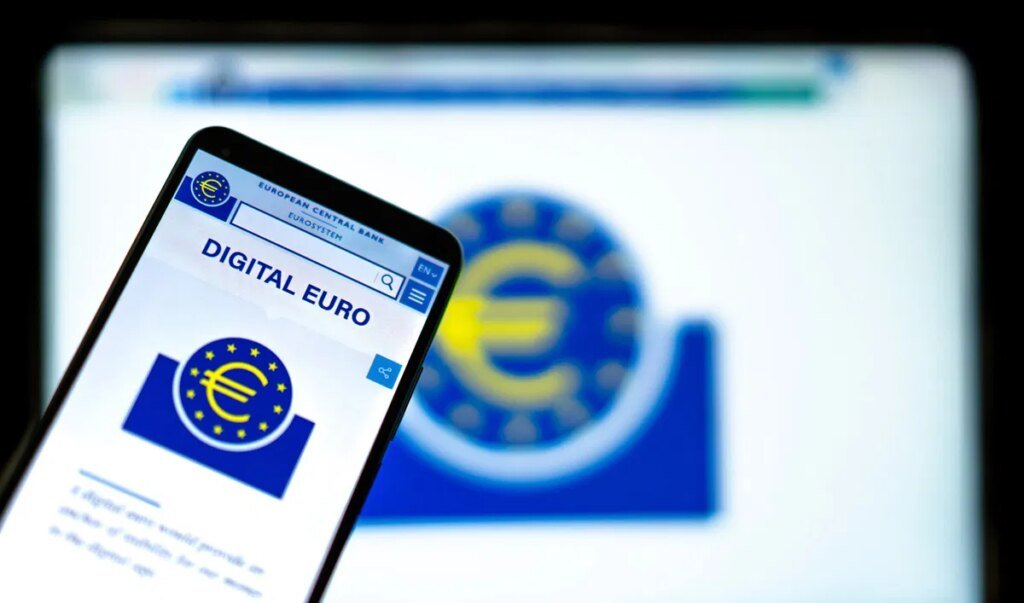The ECB prepares to test the Digital Euro, with pilot use expected in 2027.
Credit : FilipArtLab, Shutterstock
The long-awaited Digital Euro is finally taking shape. After two years of groundwork, the European Central Bank (ECB) has wrapped up the first stage of the project and is gearing up for a pilot phase in 2027, paving the way for a potential official launch by 2029.
A new chapter for Europe’s money system
During an Open Day at the Bank of Spain, Carlos Conesa, Deputy Director General for Operations, Markets and Payment Systems, shared that the project had “successfully completed its initial phase” and was now moving into the next.
If the European regulation needed for the Digital Euro is approved in 2026, Conesa explained, Europe could see the new digital currency tested as early as 2027. “That year, for the first time, the Digital Euro will be used in real situations,” he said, adding that the aim is to identify and fix any small technical hiccups before it becomes fully operational.
Conesa was quick to reassure both the public and the banking sector that the Digital Euro won’t disrupt the economy or replace existing systems. “The pilot will help smooth the path forward,” he said, underlining that the costs for banks to adapt would be similar to other recent digital initiatives.
Digital, but not a replacement for cash
So what exactly is the Digital Euro meant to do? Not replace your wallet, for starters. Instead, it’s designed to complement cash, giving Europeans a new, reliable way to pay while ensuring privacy, security, and simplicity.
According to the ECB, this digital version of the euro will act as a public payment option – something as trustworthy as banknotes, but more convenient for the modern world. It’s also meant to protect the stability of the European financial system, ensuring that Europe doesn’t fall behind in the rapidly changing landscape of digital payments.
Carla Díaz Álvarez de Toledo, Director General of the Treasury and Financial Policy, pointed out that setting limits on transactions – similar to cash – will be one of the biggest challenges ahead. “It won’t be easy, but it’s necessary,” she said. “What you can’t do with cash or instant transfers, you should be able to do with the Digital Euro.”
She also made it clear that businesses shouldn’t face higher fees for accepting digital euros than they do for traditional payment methods, an important detail for retailers already juggling tight margins.
Europe takes control of its digital future
Behind this move lies a broader ambition: reducing Europe’s dependence on US payment systems and protecting its citizens from less secure digital alternatives such as stablecoins.
The ECB and the European Union see the Digital Euro as a way to keep Europe in charge of its own financial sovereignty. By creating a digital currency backed directly by the ECB, the continent hopes to strengthen the international role of the euro while offering people a safe, regulated digital option.
Unlike cryptocurrencies such as Bitcoin or Ethereum, which fluctuate wildly and are driven by speculation, the Digital Euro will be stable and fully supported by the ECB. That means no private company controlling it, no hidden volatility, and no risk of losing value overnight.
This distinction is crucial. While cryptocurrencies rely on user trust and market demand, the Digital Euro will be under strict banking regulation, offering all the innovation of digital payments with the reliability of traditional money.
As Conesa summed up, the Digital Euro is not about revolution – it’s about evolution. It’s Europe’s way of stepping confidently into the future of finance without leaving anyone behind.
If all goes as planned, Europeans could be making their first digital euro payments by 2027, and by 2029, the continent might finally have its own official digital currency in circulation.







